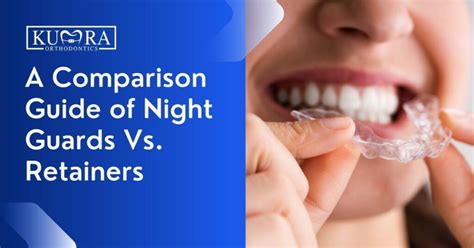Avoid Invisalign Failure: Your Comprehensive Retainer Usage Guide
Invisalign offers a discreet and effective way to straighten teeth, but its success hinges on one crucial post-treatment step: diligent retainer use. Failing to wear your retainers correctly can undo all the hard work and lead to teeth shifting back to their original positions—a disheartening experience after a significant investment of time and money. This comprehensive guide will explore the importance of retainer usage after Invisalign treatment, answer common questions, and provide strategies to ensure long-term success.
Why are Retainers Essential After Invisalign?
Your teeth naturally want to return to their pre-treatment positions. Invisalign moves your teeth into alignment, but without the ongoing support of retainers, they'll gradually shift back. This process, known as relapse, can negate the results of your Invisalign treatment, leaving you with misaligned teeth once again. Think of retainers as the "insurance policy" for your beautiful new smile. They hold your teeth in their newly achieved positions, allowing your jawbone and gums to settle and solidify the changes.
How Long Do I Need to Wear My Retainers?
The duration of retainer wear varies depending on individual circumstances and your orthodontist's recommendations. Generally, you'll initially wear your retainers full-time (22-24 hours a day) for several months. After this period, your orthodontist may advise transitioning to nighttime wear only. However, some individuals may require lifetime retainer use, particularly if they have a history of significant tooth movement or underlying jaw issues. Always follow your orthodontist's specific instructions. They'll assess your individual needs and create a personalized retainer schedule.
What Happens if I Don't Wear My Retainers Enough?
Neglecting your retainers can lead to several problems:
- Tooth Relapse: This is the most common consequence. Your teeth will gradually shift back to their original positions, potentially undoing years of orthodontic treatment.
- Increased Treatment Cost: If significant relapse occurs, you may need additional orthodontic treatment, potentially Invisalign or another method, to correct the misalignment, leading to further expenses.
- Discomfort and Jaw Pain: As your teeth shift, you may experience discomfort, pain, and even jaw joint problems.
- Compromised Bite: Relapse can affect your bite, leading to difficulties chewing and potential long-term oral health issues.
Types of Invisalign Retainers and Their Usage
There are several types of Invisalign retainers:
- Essix Retainers (Clear Retainers): These are removable, clear plastic aligners similar to your Invisalign trays but are typically more durable. They’re generally recommended for full-time wear initially.
- Hawley Retainers (Wire Retainers): These consist of a metal wire that fits around the teeth and a plastic baseplate that sits against the palate. They are often used for nighttime wear after the initial phase.
- Permanent Retainers: These are bonded to the back of your teeth, providing constant support. They are less visible but can't be removed for cleaning.
How to Properly Clean Your Retainers?
Proper retainer hygiene is crucial to prevent plaque buildup and gum disease. Here's how:
- Rinse: Rinse your retainers thoroughly with cool water after each removal.
- Brush: Gently brush them with a soft-bristled toothbrush and a non-abrasive cleaner.
- Soak (Optional): You can soak your retainers in a retainer cleaning solution to eliminate bacteria and stains. Avoid using hot water or harsh chemicals.
What if My Retainer Breaks or Gets Lost?
Losing or breaking your retainer is a frustrating experience. Contact your orthodontist immediately. They can help determine if a replacement is necessary and create a new retainer if required. Delaying action can accelerate tooth relapse.
Addressing Common Concerns about Invisalign Retainers
What are the signs of retainer problems?
Look out for discomfort, noticeable gaps or shifting between your teeth, or pain when biting. If your retainer feels loose or uncomfortable, or if you notice any changes in your teeth alignment, contact your orthodontist right away.
Can I still eat and drink with my retainers in?
Generally, you should avoid eating or drinking anything other than water while wearing your retainers. Food particles can get trapped, leading to staining and bacterial growth.
What if I forget to wear my retainers?
Consistency is key. If you miss wearing your retainers, try to get back on track as soon as possible. The longer you go without wearing them, the greater the risk of relapse.
Can I still play sports or participate in activities while wearing my retainers?
For contact sports, you'll need to make sure your retainers won't come loose or be damaged. Your orthodontist can give specific recommendations.
By following your orthodontist's instructions diligently and practicing good oral hygiene, you can ensure the long-term success of your Invisalign treatment. Your beautiful, straight smile is worth the effort!

